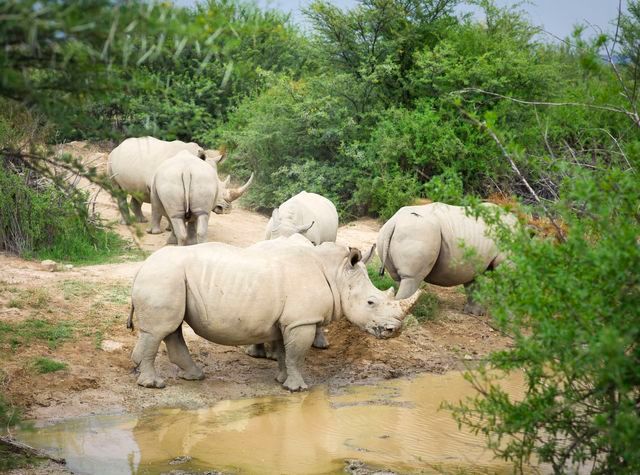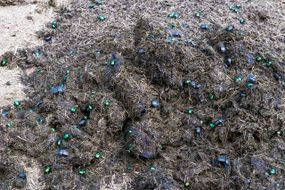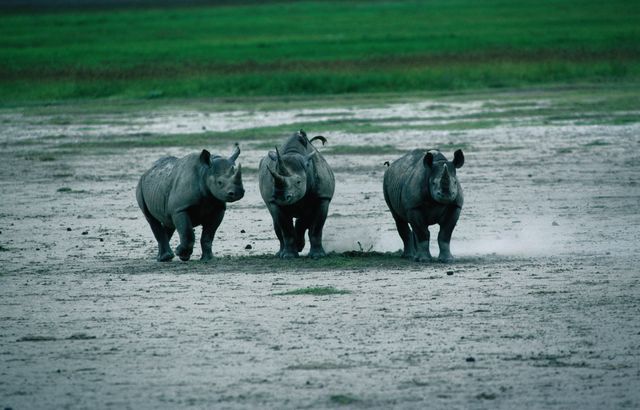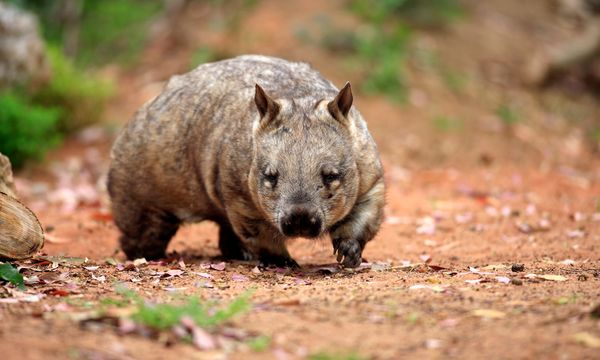
Most of us agree it's nice to have a special, separate area where everyone can relieve themselves. It's objectively great that, instead of finding piles of human feces all over the airport or grocery store, we extend to one another the courtesy of crapping in mutually-agreed-upon spaces. So civilized!
The very human-ness of this act might be why, when a group of lemurs all use a shared public toilet, we're all, now isn't that interesting?
Advertisement
But let's not fool ourselves — lots of animals species poop in latrines, or middens, and it's not just us fancy-pants primates. Nor even just vertebrates! While the act of defecating in dung heaps is common in all manner of mammals from moles to otters to elephants, some species of ants make refuse chambers in their nests. And lest we assume the public toilet is a modern invention, the oldest animal latrine ever discovered was created 240 million years ago by a herd of Dinodontosaurus — giant, herbivorous reptiles that kind of resembled a modern rhino. This prehistoric pile of poo was gargantuan, covering an area of almost 10,000 square feet (900 square metres), with a poop density of around 94 turds per square meter.
And speaking of modern rhinos, the critically endangered white rhinoceros can tell us a lot about what's probably going on when animals poop in huge, communal piles. Because white rhinos are seriously into smelling each other's crap.

But let's back up a step. In the past, researchers have come up with lots of different reasons that a population of animals would want to create a communal midden rather than just go behind the nearest tree or wherever. Since we humans mostly confine our poop to a communal area for sanitation reasons, some biologists have assumed that other animals might be doing the same. Social insects like ants and spider mites probably do keep their biological waste and uneaten food separate from their communal living spaces with the intention of keeping harmful bacteria at bay. But given that most other animals, like the white rhino, don't make any bones about just strolling up to a giant poop pile and giving it a good, thorough snuffle, they're probably not all that worried about germs. Communal latrines have also been thought to mark borders of territories, or even communicate to predators that this herd is large enough that lunch isn't going to serve itself to them on golden salvers.
But for some species, scientists think the purpose of communal latrines is for intraspecies communication, period.

"White rhinos use communal defecation sites to communicate — this is the only reason they do this." says Courtney Marneweck, an ecologist and doctoral student at the University of KwaZulu-Natal in South Africa and lead author of a recent study investigating the role of dung in white rhino communication. "They can identify age, sex, territorial state, estrous state of the depositor and even how long ago they were there. Although I did not test it in my study, I also believe that they can recognize individuals, too."
One interesting thing about white rhino midden-making behavior is that every rhino of every age in the area will use the same dungheap, but the only one allowed to poop right in the very center of the pile is the resident dominant male. He is also the only one that kicks his dung around afterwards, spreading his smell around the midden, but also carrying the smell of his poop with him everywhere he walks.
According to Marneweck, lots of other animals — both herbivores and carnivores — use communal defecation sites for communication, sometimes only to mark territory and pick up signals from other animals, sometimes just for keeping track of estrous females, and often both.
"Particularly for herbivore species, there's this hypothesis that communal defecation sites could potentially be for parasite avoidance — basically, don't crap where you eat," says Marneweck. "I highly doubt that this is the case, though. I think that communication is the reason for all species."
So, next time you're in a public bathroom, you might want to look around or take a sniff, and see what it tells you.

Advertisement

